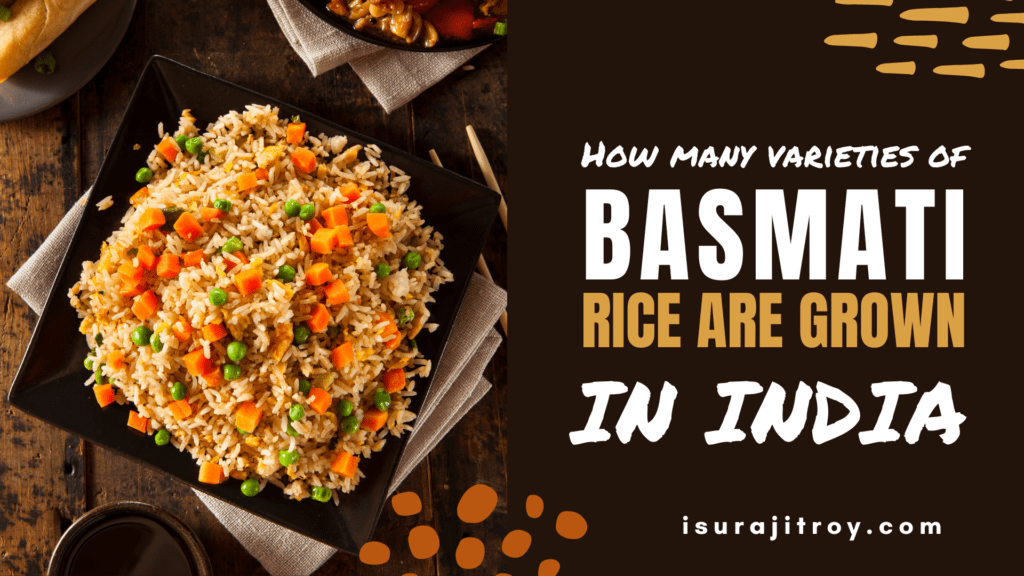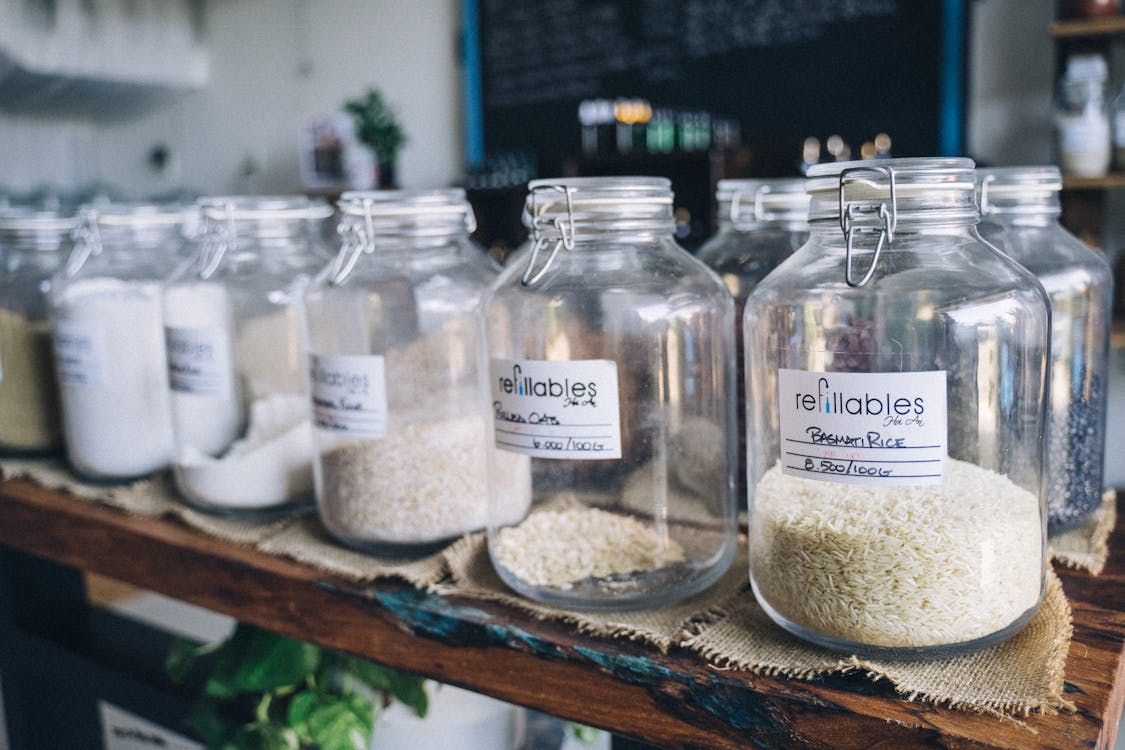
Embark on a journey with us as we delve into the captivating world of basmati rice varieties, exploring their distinct identities and culinary applications. Basmati rice, renowned for its ethereal aroma, elongated grains, and delicate flavor, reigns supreme in the realm of long-grain rice. But beyond its iconic status lies a diverse landscape of varieties cultivated in India. A burning question often arises among rice enthusiasts: “How many varieties of basmati rice are grown in India?” Let’s unravel this mystery and uncover the rich tapestry of basmati rice cultivars thriving in the fields of India.
Varieties of Basmati Rice
How many varieties of basmati rice are grown in India? This seemingly simple question opens the door to a world of aromatic diversity. While a precise number can be elusive due to ongoing research and regional variations, the answer delves deep into the rich tapestry of Indian agriculture and culinary heritage.
Basmati rice, with its ethereal aroma, elongated grains, and delicate flavor, reigns supreme in the world of long-grain rice. But beyond its iconic status lies a landscape of over 40 officially recognized basmati varieties, each boasting unique characteristics and culinary potential. This number excludes countless regional variations and experimental strains under development, highlighting the dynamic nature of basmati cultivation in India.

Embark on a journey with us as we delve into the captivating world of these 40+ basmati rice varieties, exploring their distinct identities and culinary applications. From the delicate notes of Pusa Basmati 1121 to the robust aroma of Punjab Basmati 1, each variety offers a unique flavor profile and textural experience, waiting to be discovered and incorporated into your culinary creations.
So, while a single number might not fully capture the vastness of basmati rice diversity, let this exploration serve as an invitation to embark on a delicious journey of discovery. As you delve deeper into the world of basmati varieties, you’ll not only uncover a spectrum of flavors and textures but also gain a deeper appreciation for the rich agricultural heritage and culinary traditions of India.
A Spectrum of Grain Lengths: Unveiling the Basmati Landscape
In the realm of basmati rice, the landscape is diverse, showcasing an array of grain lengths that tantalize the palate. From the elongated elegance of long-grain varieties to the balanced texture of medium-grain options, each type offers a unique culinary journey. Enthusiasts often ponder, “How many varieties of basmati rice are grown in India?” This question unveils a spectrum of choices, each contributing to the rich tapestry of flavors and aromas found in this beloved grain.

Long-Grain Delights:
- Pusa Basmati 1121: The undisputed king, adored for its exquisite aroma, fine texture, and delicate flavor. Its slender grains elongate dramatically, earning it the title “chawl of kings.”
- Dehradun Basmati: Cultivated in the Himalayan foothills, this variety boasts a slightly stronger aroma and flavor compared to Pusa 1121. Its long grains excel in elongation and offer a fluffy texture.
- Ranbir Basmati: Hailing from Jammu and Kashmir, this long-grain rice features a distinct aroma and a slightly coarse texture. Its grains retain their shape well, making it perfect for various rice dishes.
- Punjab Basmati 1: Also known as “Bauni Basmati,” this long-grain rice is popular for its strong aroma and slightly sticky texture. Extensively grown in Punjab, it’s a staple in pulao and biryani preparations.
- HBC 19 (Taraori Basmati): Indigenous to Haryana, this long-grain basmati is known for its unique aroma and slightly sweet flavor. Its soft and fluffy texture makes it a versatile choice for everyday meals.
Medium-Grain Marvels:
- Kasturi Basmati: Originating from Rajasthan, this medium-grain basmati is cherished for its distinct nutty aroma and flavor. Its shorter, plump grains cook to a soft and slightly sticky texture, making it ideal for kheer and pulao.
- Mahsuri Gold: Cultivated in Punjab, this medium-grain basmati stands out with its golden hue and sweet, floral aroma. Its cooked grains retain their shape and offer a slightly chewy texture, making it perfect for biryani and pulao recipes.
- Jeera Basmati: Grown in Haryana, this medium-grain basmati is characterized by its strong cumin aroma and flavor. Its slightly sticky texture makes it well-suited for dishes like jeera rice and pulao.

Beyond the List: A Glimpse into the Ever-Evolving World of Basmati
Exploring the rich tapestry of basmati rice varieties in India merely grazes the surface of its diversity. New cultivars are constantly evolving through rigorous research and breeding initiatives, further enhancing the culinary spectrum with their distinctive traits and tastes. It’s important to note that the popularity and distinguishing features of each strain can differ significantly based on regional nuances and personal inclinations. So, the question “How many varieties of basmati rice are grown in India?” opens up a fascinating journey into the multifaceted world of this cherished grain.
Embark on Your Own Culinary Adventure:
With this newfound knowledge, embark on your own culinary adventure, exploring the world of basmati rice. Experiment with different varieties, discover their unique attributes, and create dishes that tantalize your taste buds and celebrate the rich heritage of this aromatic grain.

Dive Deeper: Unveiling the Secrets of Each Grain
Don’t let your exploration stop at names! Each basmati variety boasts a unique story, shaped by its specific cultivation region. Travel to the verdant fields of Haryana, where Pusa Basmati 1121 basks in sunshine, imbuing its slender grains with an ethereal aroma. Journey to the foothills of the Himalayas, where Dehradun Basmati absorbs the mountain air, infusing its long grains with a touch of earthiness.
Unlock the culinary potential of each variety through traditional recipes. Savor the delicate sweetness of Kasturi Basmati in a creamy kheer, or witness the fluffy transformation of Punjab Basmati 1 in a steaming biryani. Let ancient wisdom guide your hand as you recreate time-tested dishes.
But don’t be afraid to push the boundaries! Basmati’s versatility shines in modern creations. Craft sushi rolls with vibrant Mahsuri Gold, or try a fragrant basmati risotto infused with Jeera Basmati’s warm cumin notes. The possibilities are endless, limited only by your imagination.
So, delve deeper, explore, and experiment. Each variety offers a unique chapter in the captivating story of basmati rice. Write your own culinary adventure, one delicious grain at a time.
Conclusion
The world of basmati rice, with its myriad varieties exceeding 40 officially recognized and countless more waiting to be explored, is an open invitation to culinary adventure. From the delicate Pusa Basmati 1121 to the bold Punjab Basmati 1, each grain holds the promise of unique flavors and textures. Unleash your curiosity, embark on a delicious journey of discovery, and answer the question for yourself: how many varieties of basmati rice will tantalize your taste buds? So, grab your favorite pot, explore the diverse landscape of basmati, and create dishes that sing with the aromatic soul of India.




